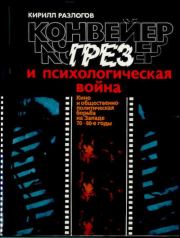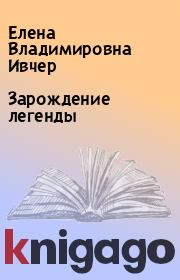Елена Сергеевна Юрова - Блеск и нищета бижутерии. Повседневные украшения в России и СССР, 1880–1980 годы
 | Название: | Блеск и нищета бижутерии. Повседневные украшения в России и СССР, 1880–1980 годы |
Автор: | Елена Сергеевна Юрова | |
Жанр: | Искусство и Дизайн, Хобби и ремесла: прочее | |
Изадано в серии: | неизвестно | |
Издательство: | Этерна | |
Год издания: | 2016 | |
ISBN: | 978-5-480-00218-8 | |
Отзывы: | Комментировать | |
Рейтинг: | ||
Поделись книгой с друзьями! Помощь сайту: донат на оплату сервера | ||
Краткое содержание книги "Блеск и нищета бижутерии. Повседневные украшения в России и СССР, 1880–1980 годы"
В книге известного московского коллекционера Е.С. Юровой рассказывается об истории бижутерии за сто лет. Во все времена драгоценности были доступны лишь немногим. Недорогие украшения существовали как подделки или как элемент народного костюма. По мере демократизации общества бижутерия постепенно выделилась в отдельный вид прикладного искусства. Дизайном недорогих украшений начали заниматься талантливые художники и ювелиры, а их произведения привлекли внимание искусствоведов и коллекционеров.
Для широкого круга читателей, всех тех, кто интересуется историей прикладного искусства и моды.
К этой книге применимы такие ключевые слова (теги) как: украшения,бижутерия,коллекционирование
Читаем онлайн "Блеск и нищета бижутерии. Повседневные украшения в России и СССР, 1880–1980 годы" (ознакомительный отрывок). [Страница - 2]
- 1
- 2
- 3
- 4
- . . .
- последняя (6) »
Some of the “former” ladies managed to save the long amber necklaces that had been highly fashionable before the Revolution (ill. 54, 56, 56a). On the photo 54 are my grand-parents with my father.
In the mid-1920s a new style became fashionable known as “art deco” so-called from the name of the Paris exhibition of applied art (Arts Decoratifs) and modern industry (1925). In the Soviet pavilion at this exhibition the dresses developed by the outstanding fashion designer Nadezhda Lamanova in cooperation with the famous sculptor Vera Mukhina were presented. Because of the lack of textiles in the Soviet country they were made of folk embroidered towels, and decorated with beads made of cockleshells, stones or bread (ill. 57). These models received the Grand Prix “for the costume based on national art”. At that time the painter Tagrina was active, who made interesting brooches with painted enamel (ill. 58).
Despite the efforts of some well-known artists, the attitude of the authorities towards jewelry didn’t change. The level of their negativism could be measured, in particular, by the caricatures in very wide-spread satirical magazine “Crocodile”. For example, in № 9 (1932) one could see a disgusting woman playing cards, which wore two strings of beads, a ring and long earrings, what was to emphasize her hostile class essence (ill. 59).
All appeals of official publications to create a new Soviet fashion and to refuse jewelry didn’t take any effect. Women made every effort to look fashionable. In particular, the subject of their cherished dreams was jewelry in Art Deco style (ill. 60). These dreams sometimes could come true thanks to the small cooperative associations of artisans. In the photo 62 we see a group of vacationers in the resort Yessentuki (1934). Two women wear quite similar necklaces made very probably by some local handicraftsman.
Gradually old handicrafts began to revive, except icon painting, because Bolsheviks were atheists and fought actively against religion. So the inhabitants of Palekh in the countryside, who for hundreds of years painted icons, got into a very difficult situation. One of the masters 1.1. Golikov found the way out. He proposed to paint lacquered boxes in the style of icons. Along with the boxes they began to paint brooches with scenes of Russian tales and new Kolkhoz life (ill. 64). Their production was a great success, and later similar craftsmens associations were organized by other former icon painters in the villages of Mstera and Kholui. Masters of enamelling who painted holy pictures in Rostov Veliky did this too.
The factory in the country side Kostino also began to work (ill. 66). Among its most common products were beads in the form of black and white dumbbells (ill. 66a). Apparently, Czech beads at that time as well were not very dear (ill. 67).
But the “iron curtain” went down rapidly and in 1930s import of foreign jewelry ended. Common people were not allowed to travel, and to receive parcels from abroad became very dangerous. Nevertheless there were exceptions. For example, the beloved woman of our famous poet Mayakovsky Lilja Brik could ask him in her letter (1925) to bring her some fashionable green beads. May be they were a necklace in Egyptian style, made by Max Neiger (ill. 68).
Not everyone’s destiny developed so well as that of Mrs. Brik. So was the story of our great poet A.A. Akhmatova. Her husband – also well-known poet N. Gumilev, was shot. Her son was imprisoned. Her poems were not published for a long time. All her life she loved beads, but after the Revolution they looked rather like a sign of mourning (ill. 70a-70d). Looking at her portraits one notices that on one of them she wears a rosary instead of beads (ill. 70b). Most probably it was connected with the title of the first publication of her collection of poems “Rosary” (1914), that made her famous.
Soviet girls also often wore a rosary as a necklace. They were atheist and paid no attention to their religious meaning. For the transformation of a rosary into beads it was enough to remove a cross (ill. 72). As a typical example of such an attitude to the rosary can serve two embroideries made from the same pattern: one 1830s another 1950s. Between them there is only one difference – the lack of a cross on the later one (ill. 71,71a).
At that time the production of inexpensive jewelry in USA flourished (ill. 73–75). Many companies produced costume jewelry, the leading designers on both sides of the Atlantic were competing in the development of new fashions in this field.
At the same time in Soviet Union the fight for the look of the new woman proceeded. In the photos in the women’s magazines it was impossible to find even the most modest jewelry. In the early 1930s, the Great Terror gradually began, and many women for whatever reason, were sent to concentration camps. Even there they were trying to find a way to adorn themselves. In many recollections how prisoners made beads of black bread is described. This technique turned out to be very popular and was used even much later until 1960s (ill. 123).
On June 22,1941, Nazi Germany attacked the USSR. With the date a story of simple plastic beads is connected. One of our neighbors told me that on this day her father, who was a well-known scientist went as usual to work, but suddenly returned home. When his wife asked him, what was the matter, he answered: “To kiss you”. It was the last time that she saw him. He was arrested straight at work and died in prison. Since this day she wore only these black beads (ill. 78).
Needless to say, during the war the Soviet women had no time for jewelry. They fought at the front, worked at defense plants, or died of hunger in blockaded Leningrad. There was no sign of jewelry on the photos in the remaining women’s magazines. Only once in a caricature in “Crocodile” (№ 25, 1945) one could see beads on the neck of Goebbels’ secretary.
Despite all the difficulties of wartime the desire of girls to look attractive was ineradicable. This can be proved in a photo of a young peasant girl, made in the midst of war (1943) (ill. 79). Most probably, she took this attire from her mother’s dower chest to make the photo and send it to her friend.
Closer to the end of war parcels with foreign dresses and jewelry began to come to Russia more and more often. Furthermore in shops jewelry appeared made of bohemian garnets (ill. 80). For the first time Russian women had the opportunity to get something fashionable. Most in demand by them were short beads and brooches with transparent stones (ill. 83). No less fashionable were also necklaces of opaque white glass and braided strands of beads (ill. 84-85b).
After the war the Baltic States were joined on to USSR. There for a short time one could buy some foreign bijoux in the flea markets. So black wooden beads with flowers and plastic chain were bought in 1946-47 in the flea market in Riga (ill. 86-86a). Somewhat later our women began to bring national brooches – “sacta”, from Latvian resorts (ill. 86, 86a). In Kaliningrad (former Koenigsberg) amber factories began to work (ill. 87–88). Along with its mass production there were artisans, who made amber brooches with carved inside insects, lizards and even ships (ill. 88a).
At the factory in Kostino and in many small workshops the production of glass beads began again (ill. 89). --">- 1
- 2
- 3
- 4
- . . .
- последняя (6) »
Книги схожие с «Блеск и нищета бижутерии. Повседневные украшения в России и СССР, 1880–1980 годы» по жанру, серии, автору или названию:
 |
| Кирилл Эмильевич Разлогов - Конвейер грез и психологическая война: Кино и общественно-политическая борьба на Западе 70-80-е годы Жанр: Искусство и Дизайн Год издания: 1986 |
 |
| Владимир Васильевич Липаев - Очерки истории отечественной программной инженерии в 1940-е – 80-е годы Жанр: Технические науки Год издания: 2015 |
 |
| Исай Абрамович Фельдман - Кухня народов СССР Жанр: Кулинария Год издания: 1990 |
 |
| Иван Павлович Осадчий - Мы родом из СССР. Книга 2. В радостях и тревогах… Жанр: Биографии и Мемуары Год издания: 2012 |


